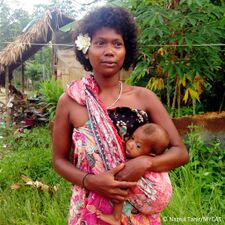Protect the Malayan Tiger and restore its habitat: Difference between revisions
(Added geo ID) |
(Updated projects) |
||
| (3 intermediate revisions by the same user not shown) | |||
| Line 3: | Line 3: | ||
__toc__ | |||
=Challenge= | =Challenge= | ||
Tiger numbers have declined, from 3000 in the 1950's down to 150 today. That is a drop of nearly 95% of the population over 70 years. Malaysia has sufficient forests to support a minimum of 1000 tigers but effective protection is limited due to a lack of resources in both finance and manpower. Forests are converted for resource extraction that is detrimental to sustainable development, and the disengagement of indigenous voices, whose lives are linked to forests, remains a challenge. | Tiger numbers have declined, from 3000 in the 1950's down to 150 today. That is a drop of nearly 95% of the population over 70 years. Malaysia has sufficient forests to support a minimum of 1000 tigers but effective protection is limited due to a lack of resources in both finance and manpower. Forests are converted for resource extraction that is detrimental to sustainable development, and the disengagement of indigenous voices, whose lives are linked to forests, remains a challenge. | ||
| Line 11: | Line 11: | ||
=References= | =References= | ||
=Additional Documentation= | =Additional Documentation= | ||
https://www.globalgiving.org//pfil/46817/projdoc.pdf | https://www.globalgiving.org//pfil/46817/projdoc.pdf | ||
=Project Gallery= | =Project Gallery= | ||
|Problems= | |||
|Problems=204417 | |||
|organization_id=44708 | |organization_id=44708 | ||
|Region=Malaysia | |Region=Malaysia | ||
| Line 23: | Line 26: | ||
|scraped_from=GlobalGiving | |scraped_from=GlobalGiving | ||
|feature_image=File:Fresh_elephant_dung_by_the_ecobridge_c_MYCAT_Large.JPG|Fresh elephant dung by the eco-bridge. | |feature_image=File:Fresh_elephant_dung_by_the_ecobridge_c_MYCAT_Large.JPG|Fresh elephant dung by the eco-bridge. | ||
|images=[[ | |images=[[File:ph_46817_181077.jpg|Reforestation work,File:ph_46817_181076.jpg|A community member on forest patrol,File:ph_46817_181078.jpg|Profile picture of an indigenous women,File:ph_46817_182803.jpg|Reforestation work at the Bateq village,File:ph_46817_181080.jpg|Riparian forest,File:ph_46817_181081.jpg|Malayan tiger,File:ph_46817_182804.jpg|Mature stand of Dipterocarp forest,File:ph_46817_182805.jpg|Pristine rainforest,File:Elephant_mother_and_calf_c_MYCAT_Large.JPG|Elephant mother with her calf.,File:Ecobridge__built_high_enough_for_elephants_to_pass_through_c_MYCAT_Large.jpg|Eco-bridge: tall enough for crossing elephants.,]] | ||
]] | |||
|coordinate=, | |coordinate=, | ||
|geo_id=1733045}} | |geo_id=1733045}} | ||
Latest revision as of 09:40, 5 August 2023
| Organization | Wildlife Society of Selangor |
|---|---|
| Region | Malaysia |
| Website | Website |
| N/A | |
| ProjectLeader | Suzalinur Bidin |
| Linked Problems & Solutions
|
|---|
The Malayan tiger is the least known and most critically endangered of all tiger subspecies, and they are nearing extinction. Fewer than 150 wild tigers remain and they are exceedingly threatened by poaching and habitat loss. This project will create sustainable livelihoods as well as empower indigenous peoples to become forest custodians through surveillance patrols, and by restoring vital ecosystems in the only enduring wildlife corridor connecting 2.5 million hectares of rainforests.
Challenge
Tiger numbers have declined, from 3000 in the 1950's down to 150 today. That is a drop of nearly 95% of the population over 70 years. Malaysia has sufficient forests to support a minimum of 1000 tigers but effective protection is limited due to a lack of resources in both finance and manpower. Forests are converted for resource extraction that is detrimental to sustainable development, and the disengagement of indigenous voices, whose lives are linked to forests, remains a challenge.
Long-Term Impact
This project addresses immediate threats to tigers but is nested in a long-term initiative to restore people's relationship with wild nature, highlighting the recovery of tiger populations as an indicator of success. Supporting this project will contribute to the protection of rare and endangered wildlife species, facilitating indigenous community based conservation projects and potentially creating downstream sectors such as ethical and locally based wildlife conservation tourism initiatives.
References
Additional Documentation
https://www.globalgiving.org//pfil/46817/projdoc.pdf
Project Gallery










